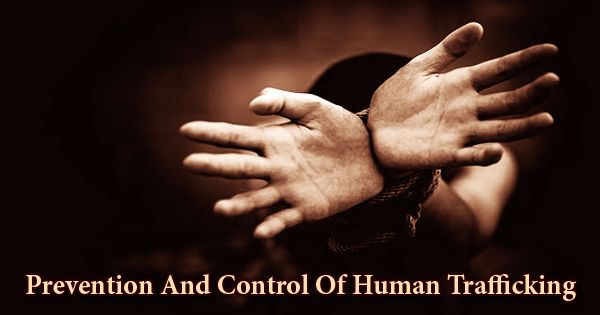Trafficking of human beings is a transnational crime involving international cooperation, and the US has taken the lead in encouraging intercontinental cooperation. Today, we find that, once again, human slavery is a sickening fact. Men, women, and children are trafficked and abused all over the world at this time: 2.4 million of them are trafficked into forced labor worldwide, 600,000 to 800,000 are trafficked across borders every year, and 12,000 children work as slaves. Whether as a country of origin, transit, or destination for victims, almost every country in the world is affected by trafficking. It is unlikely to really reach a consensus on the true extent of the issue, but what matters is that sex trafficking is massive and growing, regardless of the statistics. What matters is that every number represents a destroyed human life. It is happening on every continent and in almost every nation: none of us can claim to be completely untouched by this violence, whether the place we live is a source, destination, or transit point for trafficking.
The Trafficking Victims Protection Act (TVPA) provides international governments with assistance to promote the drafting of anti-trafficking laws, to improve investigations, and to prosecute perpetrators. The implementation of minimum anti-trafficking requirements is promoted in the countries of origin, transit, and destination of trafficking victims. As the scale of human trafficking is recognized, a range of methods have been introduced to tackle it. One such solution is Stop the Traffik. These minimum requirements include the prohibition of serious forms of trafficking in human beings, the prescription of punishments proportionate to the act, and a concerted effort to combat organized trafficking.
Furthermore, the UN Office on Drugs and Crime (UNODC) has supported several NGOs in their fight against trafficking in human beings. The Global Report recorded victims of 137 different nationalities detected in 142 countries between 2012 and 2016, during which period, 500 different flows were identified. Approximately half of all trafficking occurred within the same region, 42% of which occurred within national borders. While trafficking is an inherent part of trafficking, this can happen both inside and across borders, and it can take a number of forms. If they have been deceived or misled, an individual may even be willingly transported into an exploitative situation. But unlike those who pay to be smuggled to another world, there is no hope of victims of trafficking making a new life for themselves.
Foreign governments should make continuous efforts to collaborate with the international community, to help in the prosecution of criminals, and to protect victims of trafficking in human beings. If governments fail to meet or make progress in meeting the minimum standards, the United States will cease financial assistance beyond humanitarian and trade-related aid. Inevitably, human trafficking would pose immigration concerns, but its victims cannot simply be viewed as illegal migrants, nor can attempts to resolve them be limited to more restrictive border controls. In more than 64 countries, victims of trafficking from East Asia have been detected, making them the most geographically distributed group in the world. Regional variations in the detected types of exploitation are important. More cases of trafficking in forced labor are usually intercepted by countries in Africa and Asia, although sexual abuse is far more common in Europe and the Americas.
Traffickers’ trapped people often try to escape poverty or prejudice, better their lives, and support their families. In order to try to escape poverty or oppression, accept risky work opportunities and make dangerous migration choices, marginalized individuals are frequently forced to take unthinkable risks, often borrowing money from their traffickers in advance. In every policy area, anti-trafficking measures need to be embedded, from enhancing women’s education in source countries so that girls are less vulnerable to trafficking, to rising police pay in destination countries so that officers are less susceptible to corruption.
The Protocol to Prevent, Suppress and Prosecute Trafficking in Persons, which established a victim-centered approach to trafficking, was introduced in 2000 by the United Nations (UN). 177 countries have since signed it. In 2005, the Convention on Action Against Trafficking in Human Beings of the Council of Europe marked a step towards greater cooperation and engagement within Europe. The United Nations Trafficking in Persons Protocol, of which UNODC is the protector, was ratified by 173 countries as of February 2018. In terms of legislation, substantial progress has been made: as of 2012, 83% of countries had a law criminalizing trafficking in persons in compliance with the Protocol.
In addition, these countries will be faced with US opposition to receiving funding from financial institutions such as the World Bank and the International Monetary Fund. In the Trafficking in Persons Report, the U.S. State Department reports annually on anti-trafficking activities in countries deemed to have a serious problem with trafficking. It is primarily a collaborative research initiative that seeks to collect knowledge on human trafficking in local communities for sexual abuse. This initiative has a great potential to make an enormous contribution to our main objectives: to discourage trafficking in human beings, to prosecute traffickers, and to protect victims.
Information Sources:
















